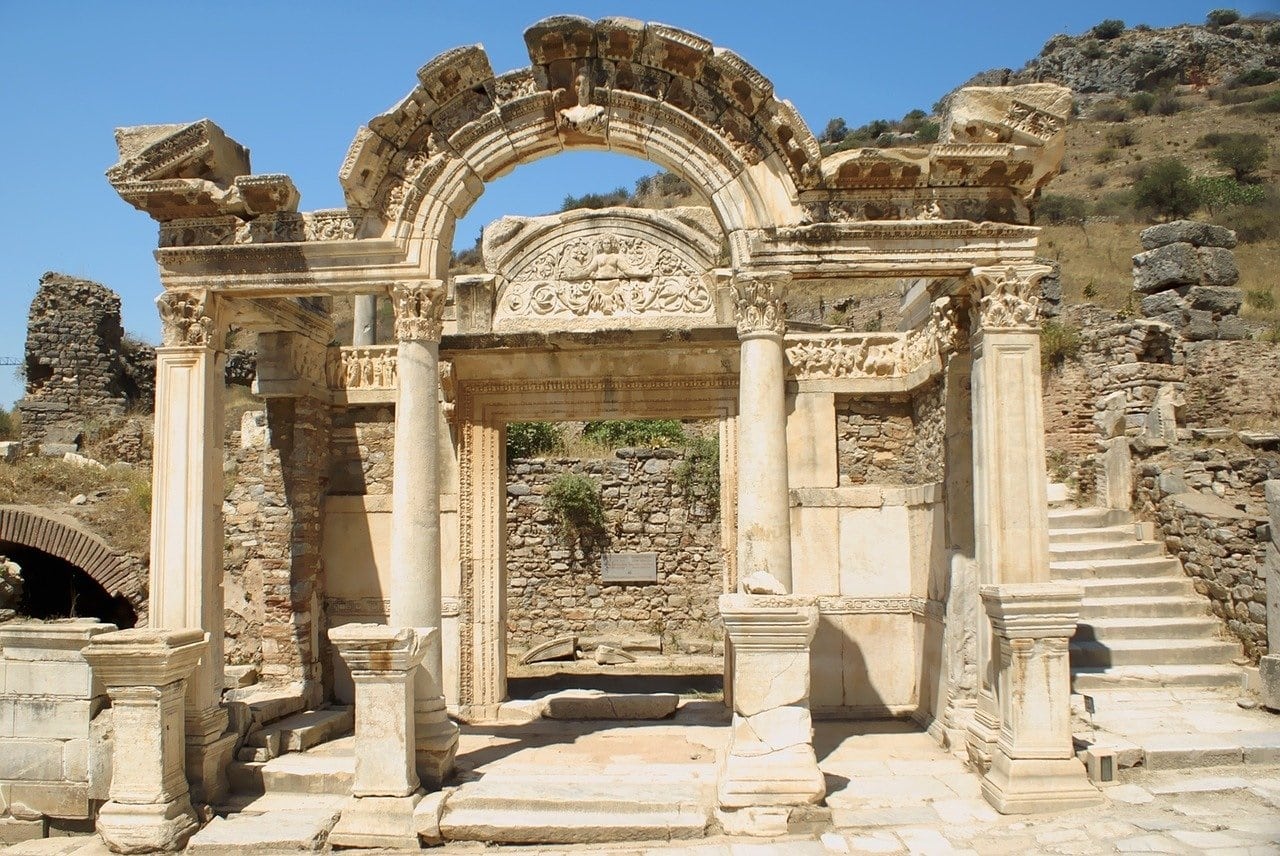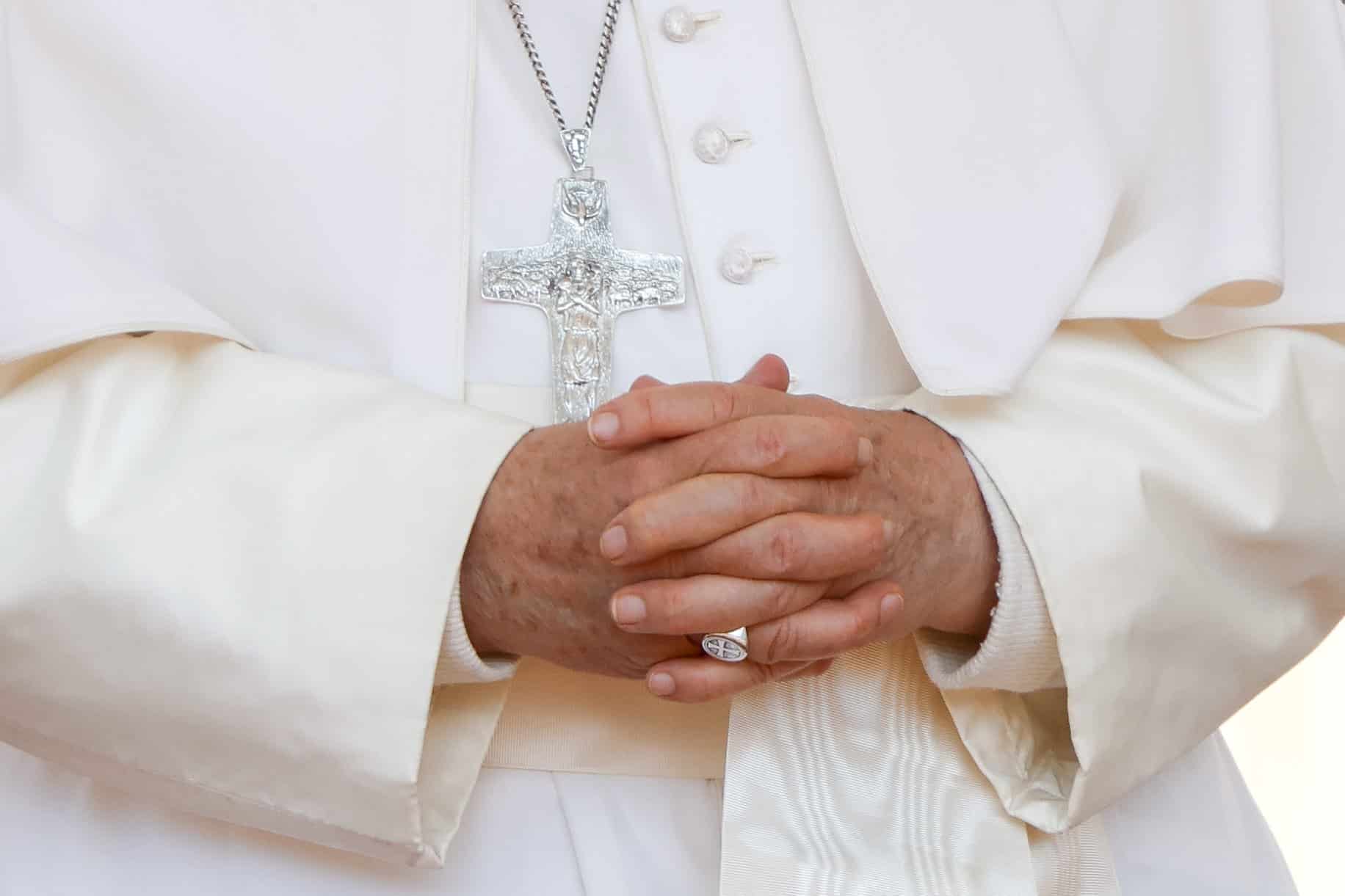When we think of biblical lands, the nation of Turkey, which straddles Europe and Asia, rarely comes to mind. Yet as a major center for the early Church, this ancient land is home to many sites sacred to the Christian faith. Two-thirds of the books in the New Testament were either written in Asia Minor (an older term for the Asian portion of Turkey) or were addressed to communities there. The apostles John, Paul and Peter lived, preached and prayed in Asia Minor, while the seven churches of the Book of Revelation (Ephesus, Smyrna, Pergamum, Thyatira, Sardis, Philadelphia and Laodicea) are located on or near Turkey’s Aegean coast.
Of all these sites, Ephesus is most famous, both as one of Christianity’s great pilgrimage sites as well as the location of some of the best-preserved Greco-Roman ruins in the Mediterranean. The apostle Paul did missionary work in Ephesus, and an early Church tradition says that the apostle John and the Virgin Mary lived there in the last decades of their lives. A well-traveled friend gave me an additional reason to visit there: “Ephesus is a place of sacred mystery, ” she had told me. “Once you visit, you’ll know why I long to return there. “
A Cosmopolitan City
Though Ephesus now lies in ruins, it was once one of the largest and wealthiest cities in the ancient world. A busy shipping port on the Aegean Sea, it had 250,000 citizens and attracted a steady stream of pilgrims to its Temple of Artemis, one of the seven wonders of the ancient world. Impressive stone buildings lined its streets, and a huge amphitheater and a stadium for gladiatorial games kept the populace entertained.
When Paul came to this cosmopolitan city around the year 53, it was already home to a small Christian community, making it a natural base for his missionary work. His passionate preaching eventually stirred up controversy in the city, particularly among the artisans who crafted miniature versions of Artemis and her temple for sale to pilgrims and tourists.
The story of what happened next is recounted in Chapter 10 of Acts of the Apostles. When a silversmith named Demetrius heard there was a man in the city saying that gods made by humans were not gods at all and should not be worshipped, he realized that his livelihood was at stake. He and his fellow artisans marched to the amphitheater shouting, “Great is Artemis of Ephesus! ” They found some of Paul’s followers and hustled along with them, creating a scene that threatened to turn violent. The biblical story concludes with Paul leaving Ephesus.
The author of the Book of Revelation mentions Ephesus as well, listing it as one of the seven churches to which he addressed his apocalyptic, symbolic messages. It’s clear that the church at Ephesus had significant stature in the early Christian movement, so much so that the Third Ecumenical Council was held in the city in 431.
Ephesus was destroyed by the Goths in the third century A.D. and rebuilt by the Emperor Constantine, only to be destroyed again by an earthquake in 614. The marble blocks from its homes, temples and other structures were carted off for use in other buildings or were left in disarray. The site was completely abandoned by the 15th century. It has only been in the last 150 years that large-scale excavations have revealed the former scale and grandeur of Ephesus.
Stepping Back in Time
Today it is one of the major attractions in the Mediterranean, drawing millions of visitors each year. Once a port city, due to the silting in of its harbor, it now lies about three miles from the Aegean Sea, near the modern town of Selcuk.
As I entered Ephesus, I must admit that at first I was not terribly impressed. I went through the entrance gate and saw a few ruins. Although they were picturesque, they differed little from others that I had seen. I kept walking, cresting a small hill that offered the full panorama of Ephesus. That was the moment that made the breath catch in my throat, for finally I realized why Ephesus is still a wonder of the world.
Descending its main street, I passed one incredible marble structure after another a theater and temple, then a row of terraced houses, then another temple and bathhouse.
At the base of the hill stood the facade of a library that once was one of the largest in the world. Turning the corner, I saw an amphitheater built to hold more than 20,000 people, the exact place where Paul’s followers had been dragged by the mob. Below lay the remains of an agora, the market where merchants once traded goods from around the world.
As I explored, I reveled in the small details that make Ephesus so endlessly fascinating. In a row of houses that are being laboriously reconstructed were mosaics that looked as fresh and vivid as if their owner had just stepped out to the market to buy olives and bread. When I stood on the top level of the amphitheater, I could easily hear words said on the stage, proving the incredible acoustics of the place.
All of these treasures are set in a peaceful valley cradled by low-lying mountains, making it easy to imagine what it must have been like in the days when pilgrims flocked to the Temple of Artemis and ships filled the harbor below. Amid the clean, fresh air and the brilliant sunlight, I could almost see Paul walking on the harbor road, struggling to form the words he would write to the Christians in Corinth. I could imagine him returning to his modest home at the end of a long and tiring day, picking up his pen and creating words that still vibrate with power long after the mighty Temple of Artemis has crumbled to dust and Ephesus itself has sunk into slumber: “If I speak in human and angelic tongues but do not have love, I am a resounding gong or a clashing cymbal ” (1 Cor 13:1).
Remembering Saint John
Compared with the immense scale of Ephesus, the nearby ruins of the Basilica of Saint John are far less impressive, but the site has a unique power. The church stands near the remnants of the Temple of Artemis, creating a matched set of two great religious landmarks now fallen into ruin.
Ayasuluk Hill, the site of the remains of the basilica, is a promontory that overlooks the town of Selcuk and the surrounding valley. Its scattered stones and low-lying walls only hint at the immense building that once stood here. Built in the sixth century by the Emperor Justinian, it was once one of the largest and most important churches in Christendom.
The building had great prominence because it was believed that the body of the apostle John was buried there. Now it must be said that although the historical evidence is strong for Paul’s presence in Ephesus, John’s connection to the area is less certain. But while there is no biblical mention of John’s being here, early Church tradition strongly links the apostle to that city. One possibility is that John came to Asia Minor to assume leadership of the growing Church communities there after the martyrdom of Peter and Paul in Rome.
My local guide explained that tradition says that during John’s lifetime, this was the spot where he liked to write. Before his death, he asked his followers to bury him in the place that meant so much to him. When I stood in that same spot, listening to the birds sing and looking out at the beautiful valley below, I understood why a writer would choose to work here. As a writer myself, I felt a visceral connection with John’s choice. Of course you would choose to write in this serene place if given the chance, I thought. How could you not?
Walking amid the stone foundations of the church, I realized that while the words of Paul’s First Letter to the Corinthians echo in Ephesus, here on Ayasuluk Hill other words whisper,
ones that were perhaps penned on this very spot: “In the beginning was the Word, and the Word was with God, and the Word was God. He was in the beginning with God. All things came to be through him, and without him nothing came to be. What came to be through him was life, and this life was the light of the human race; the light shines in the darkness, and the darkness has not overcome it “
(Jn 1:1).
The Basilica of Saint John is a place to contemplate those words, there where John himself may once have worked, looking out at those same beautiful hills.
Mary’s Peaceful Home
My trip to Ephesus ended with a short drive up a winding mountain road to a simple stone building known as the House of the Virgin Mary (Meryem Ana Evi). According to one strand of Church tradition, it was here that Mary lived her final years after accompanying John to Ephesus. The site is connected with visions received by Blessed Anna Katharina Emmerick (d. 1824).
Whether or not this humble structure was indeed the Virgin Mary’s final home, the deeper truth of this shrine is the peace that permeates it. The prayers of many pilgrims have hallowed this dwelling, for it is a place of pilgrimage for both Christians and Muslims, who also honor Mary as the mother of Jesus. The tiny house is surrounded by aromatic pine trees and serenaded by birds. It was a place that made me want to be still and silent, which I interpret as the surest sign that I’m on holy ground.
In contrast to the ornate churches found at other Marian sites such as Lourdes and Fatima, there was not much to see at this shrine. Inside the house, a statue of Mary sits atop an altar, with two flickering candles on either side. In the space before the altar are two places to kneel and pray. That is all.
But that was enough, I realized as I knelt before the altar, for I could imagine Mary there. I hoped that she had ended her earthly days in a peaceful sanctuary like this, and that the birds had serenaded her as she pondered in her heart all that she had witnessed. There at the end of my pilgrimage, I came to realize the full truth of my friend’s words. Ephesus is indeed a place of sacred mysteries and like my friend, I dream of returning there.
Hagia Sophia in Istanbul
Imagine that you are an ordinary person in the city of Constantinople (now known as Istanbul) in the sixth century, someone who lives in a modest dwelling and has never been in a building taller than a couple of stories. Then one day you enter a new church constructed by the emperor, a place called Hagia Sophia, the Church of Holy Wisdom.
It is a place so resplendent, so opulent and so huge that you can hardly believe it is real. As you walk through its massive doors, you enter an interior that glitters with mosaics, icons, holy relics and colored marble, all lit by thousands of flickering candles and lamps. Then you look up and see a perfectly shaped dome far above you, a dome that seems to float as if suspended on strings from the heavens.
Perhaps the Emperor Justinian can be forgiven the hubris of his claim after his church was completed: “Solomon, I have surpassed you! “
Since most journeys to Ephesus pass through Istanbul, visitors should take the time to see this remarkable religious landmark. Built by the most skilled artisans and laborers of the empire, Hagia Sophia was the foremost wonder of the Byzantine world. Completed in 537 A.D., it was here that emperors were crowned and the Fifth and Sixth Ecumenical Councils met to chart the theological course of Christianity.
Though sacked by crusaders in 1204 and shaken by numerous earthquakes, for nearly 1,000 years it reigned as the preeminent Christian cathedral.
After Mehmet II conquered the city in 1453, Hagia Sophia became one of the Muslim world’s great mosques. Its holy relics were removed, inscriptions from the Koran were painted on the interior of its great dome, and four minarets were built around its exterior. In the mid-19th century, six large discs bearing the names of God, Muhammad and the first caliphs and imams were added to its interior, completing the building’s unique blending of the iconography of two faiths.
Since 1934, Hagia Sophia has been a museum, but it is still a holy place that attracts pilgrims from around the world. A World Heritage Site, its gold mosaics alone make it worth visiting. It remains the spiritual heart of Istanbul and a treasure for Christians from around the world.








